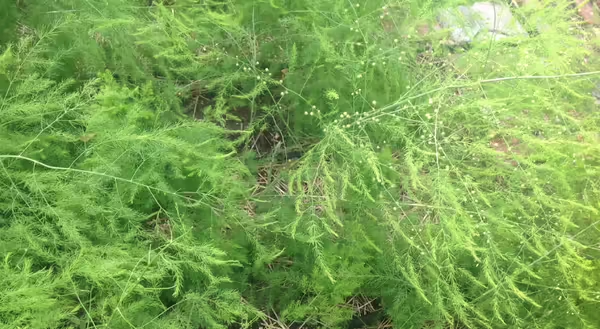
Originally published by Kelly Allsup on February 11, 2020.
Asparagus goes great with hollandaise sauce, has a nutty flavor when eaten raw (wash it first, and cut off the lower third), and is always a welcome treat at a restaurant. With a little patience and some planning, you can grow loads of asparagus each spring.
Growing Requirements
Full sun is required.
Poor drainage in your asparagus patch will promote disease issues in the roots.
Some growers emphasize the need for added phosphorous and potassium fertilizer for asparagus production. You won’t know if you have enough phosphorus and potassium without a soil test. The standard fertilizer treatment is a treatment of 10-10-10 in the spring for the first three years, then changing to immediately after the final harvest in year four.
Selection
Asparagus plants are either male or female. The males are desired for their larger spears, but not necessary to have a bountiful harvest. The following asparagus varieties have shown high yields in University of Illinois trials:
Sequoia - consistently highest producer on the list, male variety.
Porthos - high yielding male variety with good disease resistance.
Mondeo - high yielding male variety, tender and delicate flavor.
Jersey Giant - consistent yield, male variety that is easy to grow and has some disease resistance
Pacific Purple - is high yielding, male and female (produces seeds), sweet, and heat tolerant
Planting
Improving soils with some added compost at the time of planting will help with drainage.
In the spring, plant crowns (a bundle of asparagus roots), not seed, in a trench 12 inches wide and 6 inches deep, spaced one foot apart with the roots spread out from the center of the crown. Cover the crown with 2 inches of soil. As asparagus grows it rises out of the soil so adding an inch or two more of soil while it is actively growing will help the plant stay put.
In the summer, ferny foliage follows the asparagus spears. Allow this to grow as it is collecting energy for the plant. Mow the winter-killed stems in late winter or early spring before spears appear. This will help you keep the patch insect and disease free.
Harvest
Asparagus pickers call it snapping. Snap the spear above the woody stem as to not harm the plant.
The rule of thumb to avoid over-harvesting:
Year 2, you can harvest for two weeks. Year 3 for four weeks. Year 4, six weeks. After year five, you get 8 weeks of as much asparagus as you can eat.
If more than 3/4 of the spears are narrower than a pencil, stop harvesting and allow for fern growth.